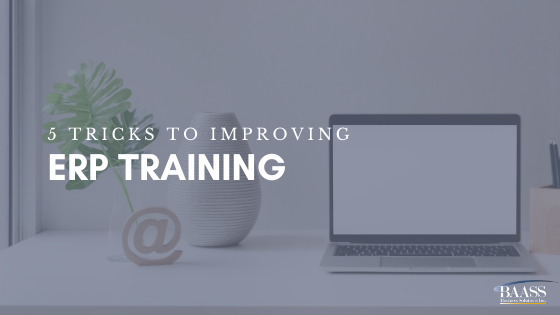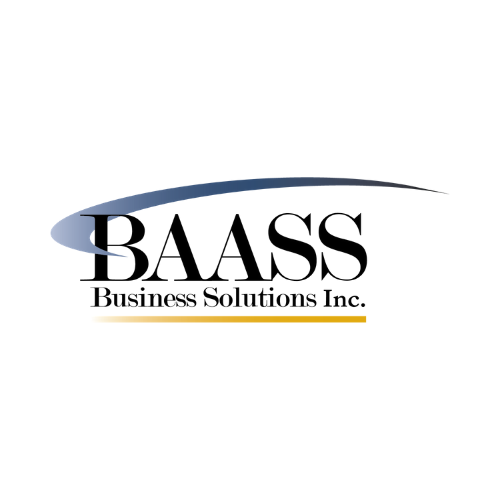
Companies often find it challenging to create engaging and insightful training programs for their employees. The launch of a new Enterprise Resource Planning (ERP) System is a great time to refresh and initiate your entire training program around the use of the ERP solution and the resulting data. Not only do you have the opportunity to provide training on the new system, but you can also provide training on best practices in data management, interpretation, and use.
It can be difficult to know where and when to start so we have compiled a small list of tips and tricks that will help you project manage your training, focus it on your new ERP system, and make it a fantastic experience for your employees.
- Match the training method to your employees and their job responsibilities
Employees interact with the ERP system in different ways depending on their job title, function, and area of responsibilities. Challenge yourself to offer varying levels of training tailored to each employee groups’ needs. For instance, an employee who works in the office such as human resources would need different training than an employee that focuses on the supply chain or warehouse.
Certain employees will need to know the reporting function well, while others may just need to know how to access data quickly. Assess the needs of your employees and structure the training to focus on what they want and need to know to do their jobs better.
There are a number of training methods to be aware of:
Classroom-Based Training Programs
This method of training is usually led by qualified facilitators or experienced professionals. These sessions are held in person in groups where information will be shared through a number of presentations, activities and possible assignments. This is a great approach for ERP training to begin because it gives learners knowledge of the product and it’s capabilities.
The advantage of classroom-based training is that a group of employees can attain large amounts of knowledge at the same time. Although there are also some disadvantages in cost of venues, having employees unavailable within the office, and sometimes additional costs are included within this method.
Interactive Training
Interactive training involves a more “hands on” approach and there are various ways this can be completed. However, some of the most common are simulations, scenarios, role plays, quizzes or games. By learning about a new skill, tool, or technique and then being able to actively try applying it helps to keep learners interested and engaged. However, this method can be much more time consuming and may be more difficult to apply to an ERP implementation.
On-The-Job Training
This method of training is applying new knowledge directly to a job or task. This method can be helpful in ERP training once employees have knowledge of the product and the features and can encourage rapid learning.
Online Training
eLearning, or online training, has become one of the most widely used methods. This method can include videos, quizzes, courses and more. Online training can be an effective way for employees to learn at their own pace and on their own schedule, however some do better with a physical teacher in place.
-
Keep training sessions short and focused
Keeping your training sessions short and focused. Most participants are anxious to return to their desks and continue with their work. Their attention spans are short, and they need to know immediately how the information presented in training will impact their work.
Focus on topics relevant and applicable to their jobs; train people only on what they need to know to do their jobs. Don’t waste time with a lot of background information or other material that’s not going to help them use the ERP functions they need to know.
- Create a training intranet
A training intranet can provide staff with an area on your server they can access for all of the training materials and documents. Simulations, updates, and presentations shared during training can all be archived in one specific area of the intranet for easy access. -
Measure training outcomes
Just as you would measure the ROI of a marketing campaign, so too do you need to measure the ROI of training. In education and training, learning outcomes are goals that you can measure before and after training is completed. List specific outcomes you wish to achieve, such as the number of people participating in training, the number using the new ERP system versus not, and other information that is easily quantifiable. -
Call the experts if necessary
Although many HR departments can successfully launch a training program, training in ERP may require specific knowledge of the new system that HR isn’t comfortable teaching. It may be worthwhile to contact BAASS Business Solutions for assistance creating and hosting a training program to help employees learn how to use Sage 300 ERP after its implementation in your company.
Sage 300 ERP
BAASS Business Solutions provides insights, consulting, and assistance to companies choosing or upgrading their ERP systems. Sage 300 ERP offers a flexible yet powerful ERP system that grows with your company and offers excellent data reporting and analysis tools to help you improve your business. We’d be happy to show you a demonstration or provide you with more information, contact us today!
Once you are done with your ERP training, did you know we also offer Business Intelligence training?
These courses will improve the overall knowledge and skills of Sage Intelligence and Excel users. The goal of these training sessions are for you to spend less time capturing data, and more time gathering insights in reports that are clear, relevant, and drive decisions. Click to learn more.
